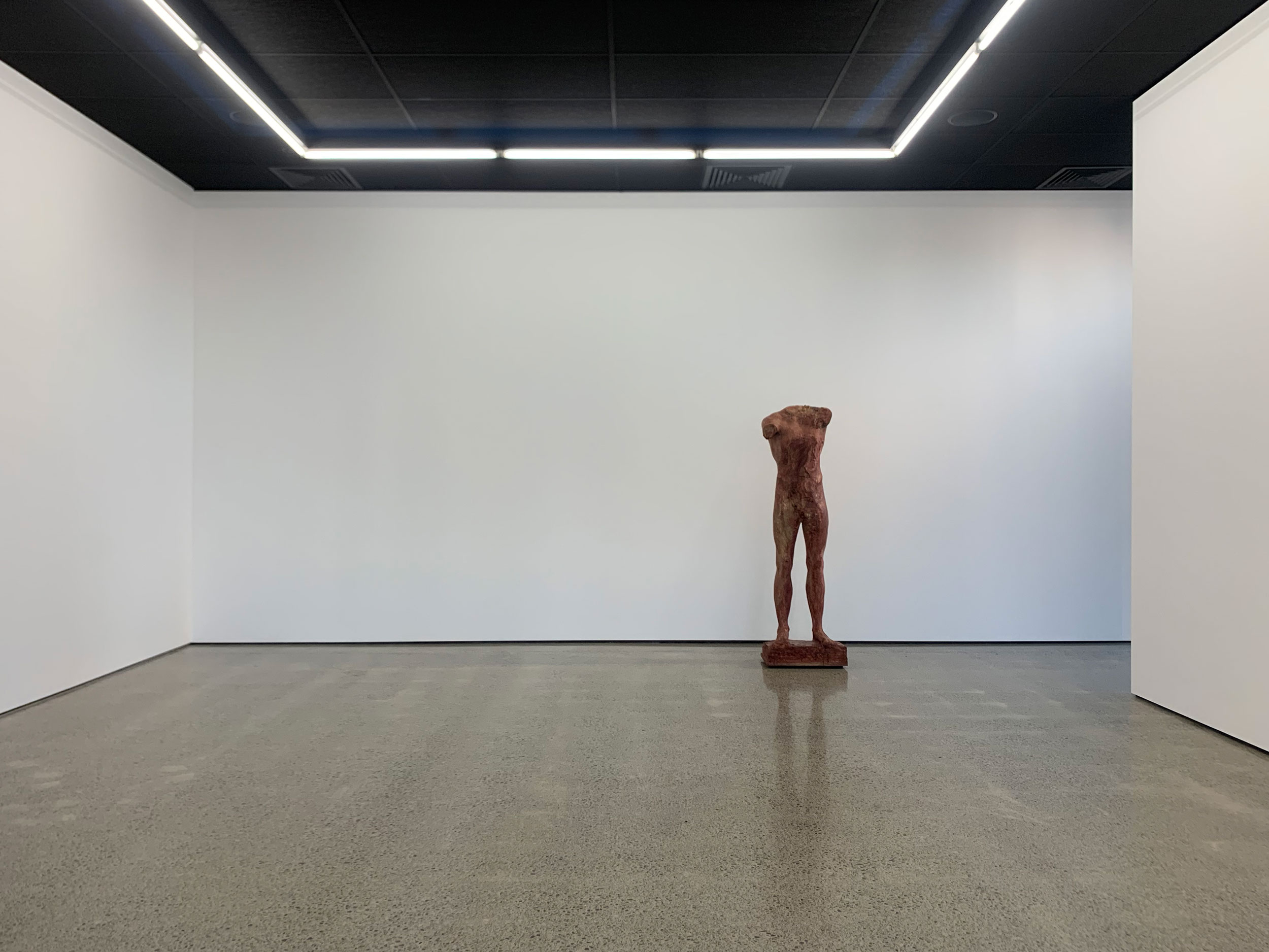Obscura
Nadene Milne Gallery - 2019
The Nude has been a troubled motif in the Western art for well over a century. The old hierarchies that placed the “life study” at the apex of the classical “beaux arts” teaching pyramid are long gone, and the seedier and more clichéd iterations of the nude in historical painting and sculpture seem largely to have defeated its expressive potential. Little wonder then that so few contemporary artists will approach it without the protective cloak of irony or historical allusion.
It might be assumed that these veiled figures by Sam Harrison also seek to avoid our cultural difficulties with the Nude. Drapery is not a new device in art and there is a certain currency to its application to the human body. My experience of Harrison's work, however, is that he is not prone to the rhetorical flourish.On the contrary, few artists of this generation have approached the subject of the unclothed figure so directly and with such expressive discretion and sensitivity. So what is Sam up to here?
Anyone familiar with Sam Harrison's unclothed figures will recognise in them an abbreviation and succinctness of expression. His discretion demonstrates his understanding that representation can be too literal, and exposure too complete, in these days of limitless information. With equal care he has avoided the dangers of partial concealment which, in the language of the body, so easily falls into titillation.
Instead, the drapery covering these figures is not concerned with concealment so much as the revelation of certain structural essentials. In these works the artist is engaged in a process of reducing and refining perception. He is relying on those visceral connections of felt understanding, brought to the work by the viewer, to sustain recognition beyond the literal description offered by a more transparent representation
- Jude Rae, 2019
Akeldama is Arabic for “Field of Blood”, referencing a place in Jerusalem associated with Judas’ death. Owing to textual ambiguities in the bible, religious scholars are divided as to whether that blood belongs to Judas or Jesus. One line of biblical scholarship believes the blood belongs to both betrayer and the betrayed.
Sam Harrison’s work of the same title is a suite of 7 color field paintings composed in sheep blood. Harrison, a longbow hunter, is well acquainted with the raw material of the body. His sculptures, prints and paintings evoke the miraculous existence of emotional and spiritual expanses contained within the heaving sacks of flesh we call home.
The color fields of Akeldama are imbued with the emotional and physical associations of blood, which lends them a numinous grisliness that is impossible to describe. It is abstract portrait of humanity, painted in the element common to us all. Differences in race, religion, gender and even species are belied by the recurrence of flesh, bone and blood. We all spill red like the lamb. This is a work that confronts the violence we do to each other. But it also collapses the dichotomy between the victim and perpetrator, betrayer and betrayed, by illuminating the evidence of our inherent sameness that violence leaves in its wake.
- Nadene Milne, 2019
Akeldama, 2018
blood and Damar varnish on Lanaquarelle (Framed)
1674 x 8480 mm












